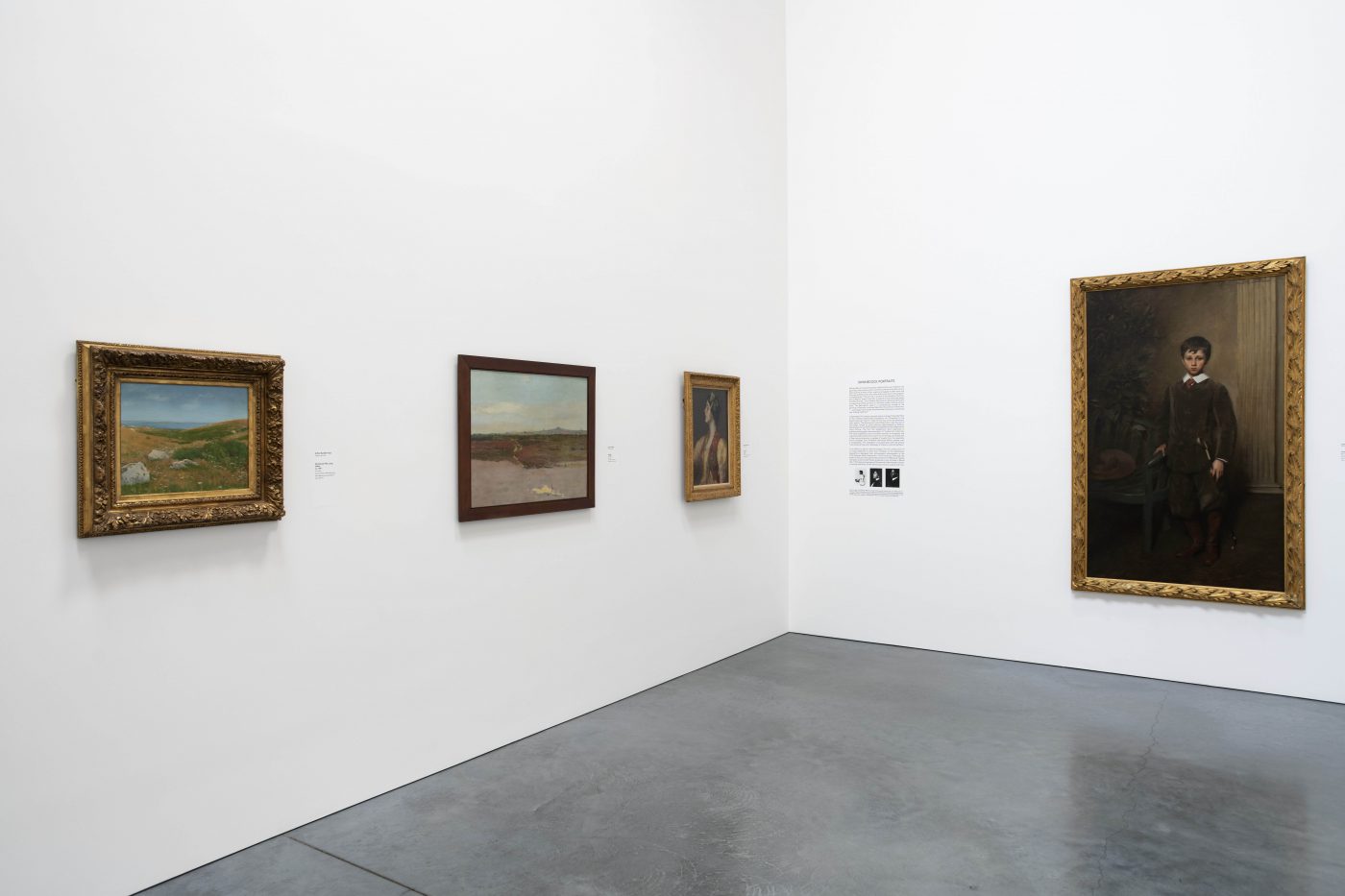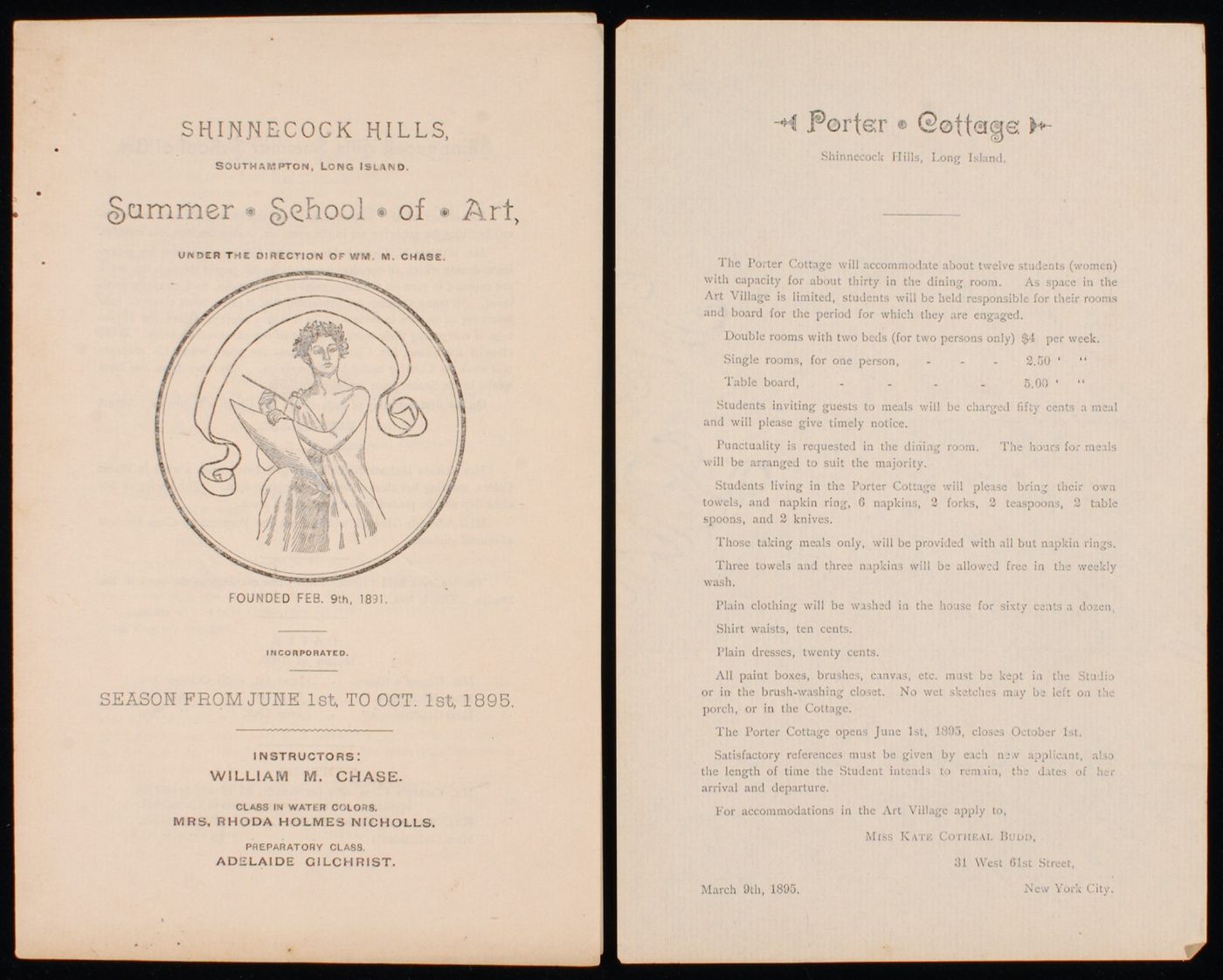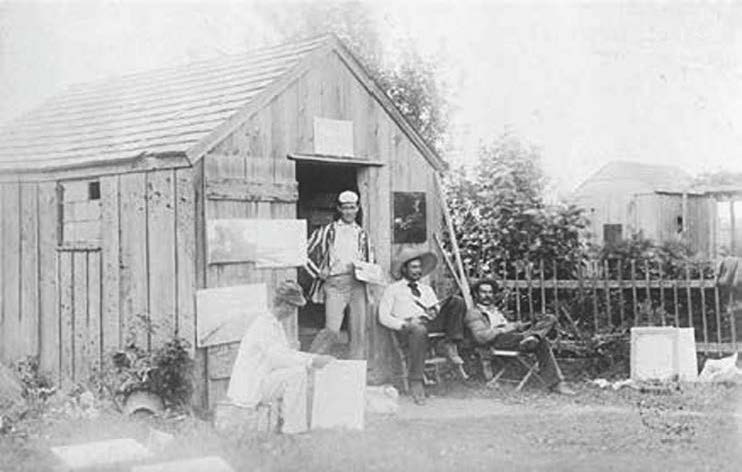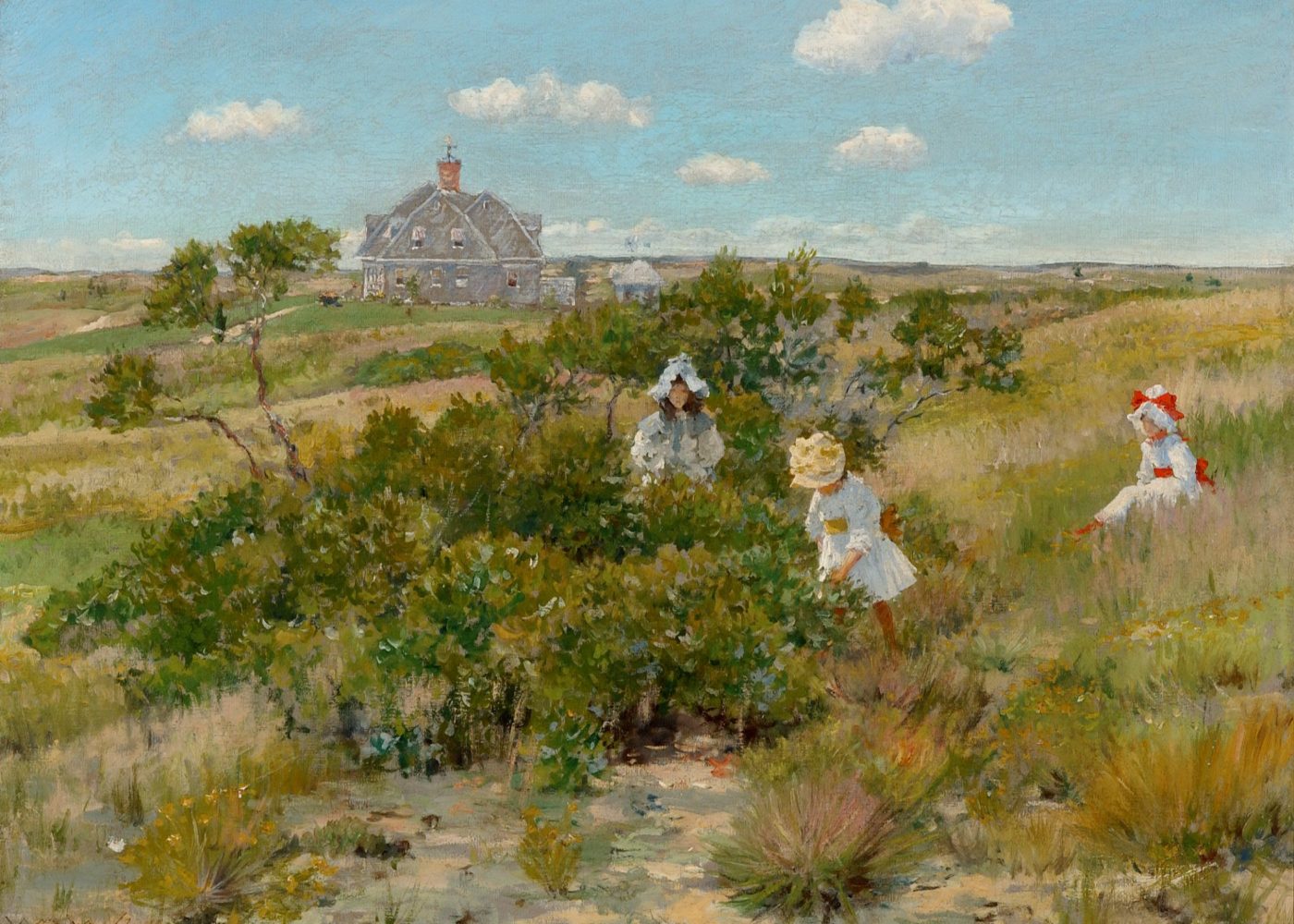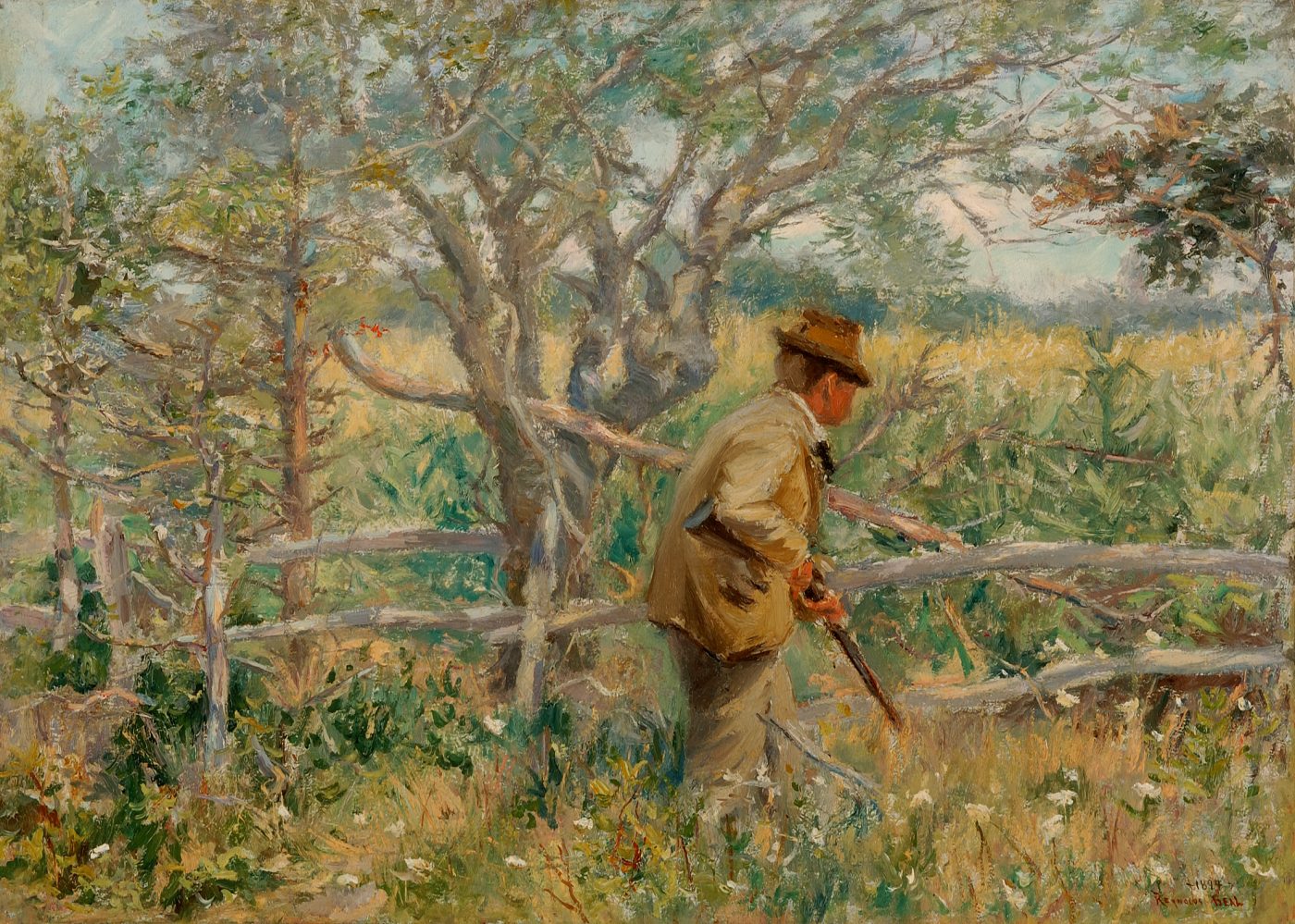William Merritt Chase (American, 1849–1916) first came to paint in the Shinnecock Hills in 1891 at the invitation of Mrs. Jane Ralston Hoyt. She had proposed opening a summer art academy based on the plein-air schools then popular in Europe—a strategy devised to enhance the locale as a resort and to promote her own bold real estate ventures there. Chase’s schooling at Munich’s Royal Academy and a decade spent traveling abroad made him one of the most worldly and sophisticated American painters and a renowned teacher of his day—the logical choice for founding director of the Shinnecock Hills Summer School of Art.
The school was an immediate success. Chase’s summer classes followed a regular pattern of demonstrating portrait-painting technique at the school’s Art Studio, plein-air painting, and student critiques, reserving time for his own work in a studio within the family’s McKim, Mead & White-designed house on Sugar Loaf Hill in the Shinnecock Hills. His travel from the house to the Art Village took him right by the Shinnecock Reservation, an 800-acre peninsula in the Shinnecock Bay.
What has been little considered in the history of these years is the many bonds that grew among Chase and his growing family, the school, and the people of the Reservation. Mr. and Mrs. Chase’s fourth daughter Hazel was born in August 1893, at the end of the family’s third summer in Shinnecock. They gave her the middle name “Neamaug”— “between the waters” in the Shinnecock language—in tribute to their neighbors in the land between the Atlantic Ocean and the Peconic Bay.
The exhibition features works by Chase and his students, augmented by archival photographs dating from 1890–1910 generously provided by Shinnecock historian David Bunn Martine. The portraits of Shinnecock Indian Nation members who lived alongside the Chase family and the art school society—including the women who grew produce and functioned as laundresses, and the men who served as fishing and hunting guides—reveal the unexpected story of the impact of Chase’s ties within the community.


